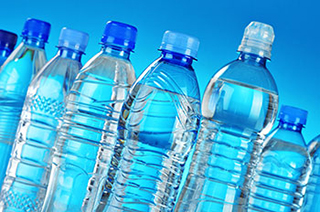Introduction

Bisphenol A (BPA) is a chemical produced in large quantities for use primarily in the production of polycarbonate plastics. It is found in various products including shatterproof windows, eyewear, water bottles, and epoxy resins that coat some metal food cans, bottle tops, and water supply pipes.
How does BPA get into the body?
The primary source of exposure to BPA for most people is through the diet. While air, dust, and water are other possible sources of exposure, BPA in food and beverages accounts for the majority of daily human exposure.
Bisphenol A can leach into food from the protective internal epoxy resin coatings of canned foods and from consumer products such as polycarbonate tableware, food storage containers, water bottles, and baby bottles. The degree to which BPA leaches from polycarbonate bottles into liquid may depend more on the temperature of the liquid or bottle, than the age of the container. BPA can also be found in breast milk.
Why are people concerned about BPA?
One reason people may be concerned about BPA is because human exposure to BPA is widespread. The 2003-2004 National Health and Nutrition Examination Survey (NHANES III) conducted by the Centers for Disease Control and Prevention (CDC) found detectable levels of BPA in 93% of 2517 urine samples from people six years and older. The CDC NHANES data are considered representative of exposures in the United States. Another reason for concern, especially for parents, may be because some animal studies report effects in fetuses and newborns exposed to BPA.
If I am concerned, what can I do to prevent exposure to BPA?
Some animal studies suggest that infants and children may be the most vulnerable to the effects of BPA. Parents and caregivers can make the personal choice to reduce exposures of their infants and children to BPA:
- Don’t microwave polycarbonate plastic food containers. Polycarbonate is strong and durable, but over time it may break down from over use at high temperatures.
- Plastic containers have recycle codes on the bottom. Some, but not all, plastics that are marked with recycle codes 3 or 7 may be made with BPA.
- Reduce your use of canned foods.
- When possible, opt for glass, porcelain or stainless steel containers, particularly for hot food or liquids.
- Use baby bottles that are BPA free.
What is NIEHS Doing?
NIEHS Research Efforts
- CLARITY-BPA Program - The Consortium Linking Academic and Regulatory Insights on BPA Toxicity (CLARITY-BPA) program was developed to study the full range of potential health effects from exposure to BPA. Researchers from the U.S. Food and Drug Administration conducted the core guideline-compliant studies, and 14 university-based researchers conducted separate studies supported by grants from NIEHS. Their findings were released in a 2021 report: Consortium Linking Academic and Regulatory Insights on Bisphenol A Toxicity (CLARITY-BPA): A Compendium of Published Findings. A subsequent paper published in the journal Birth Defects Research reviews the CLARITY-BPA research program with the goal of identifying techniques, tools and endpoints that may further refine the sensitivity of toxicity testing of endocrine disrupting chemicals.
- BPA Initiatives - The National Institute of Environmental Health Sciences (NIEHS) and National Toxicology Program (NTP) have developed an integrated, multipronged, consortium-based approach to optimize BPA-focused research investments to more effectively address data gaps and inform decision making.
Further Reading
Stories from the Environmental Factor (NIEHS Newsletter)
- How Can You Reduce Health Effects of Endocrine-disrupting Chemicals? (July 2024)
- Epigenomics and Epitranscriptomics Front and Center at Council (March 2024)
- Insight Into Endocrine Disruptor Bisphenol A Advanced by NIEHS (November 2021)
- Epigenomics Sheds Light on Environment and Disease, Experts Say (October 2021)
- The Environment Influences Brain Development, Experts Say (March 2020)
Additional Resources
- America's Children and the Environment: Biomonitoring - Bisphenol A (BPA) - Information about BPA levels measured in children and women from the Environmental Protection Agency.
- Bisphenol A (BPA) - A summary of information and actions of the Food and Drug Administration, a regulatory agency of the U.S. Department of Health and Human Services.
- Bisphenol A (BPA): Use in Food Contact Application - Information from the FDA’s safety reviews of BPA.
Related Health Topics
This content is available to use on your website.
Please visit NIEHS Syndication to get started.


